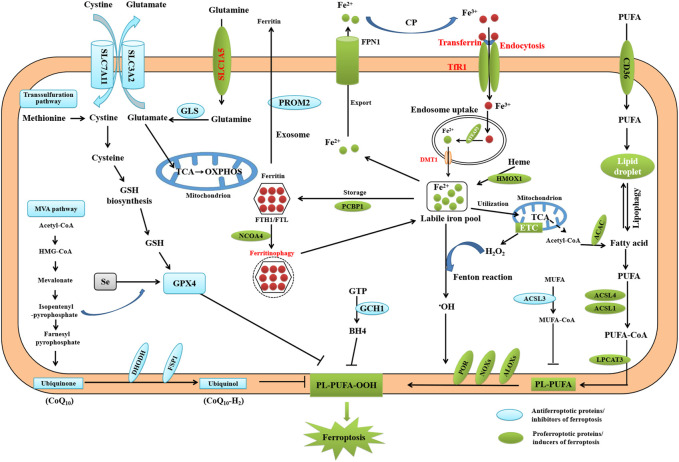FIGURE 2.
Core mechanisms of ferroptosis. Ferroptosis is mainly caused by iron-dependent lipid peroxidation. The initiation of ferroptosis requires two key signals, namely the accumulation of free iron and the inhibition of antioxidant SLC7A11/GPX4 system. The generation of polyunsaturated phospholipid (by ACSL4 and LPCAT3) and subsequent activation of ALOX have a main role in promoting lipid peroxidation. This process requires HO from an iron-mediated Fenton reaction or the activation of POR, NOX, or mitochondria electron transport chain pathways. The lipid peroxidation or its secondary products (e.g., 4-HNE and MDA) induce pore formation in plasma or organelle membrane, which eventually triggers cell death at the final step of ferroptosis. Alternatively, CoQ10 or tetrahydrobiopterin (BH4) inhibits ferroptosis independently of GSH. Importantly, all aspects of iron metabolism, including iron absorption, storage, export, and utilization, have an important regulatory effect on ferroptosis.

